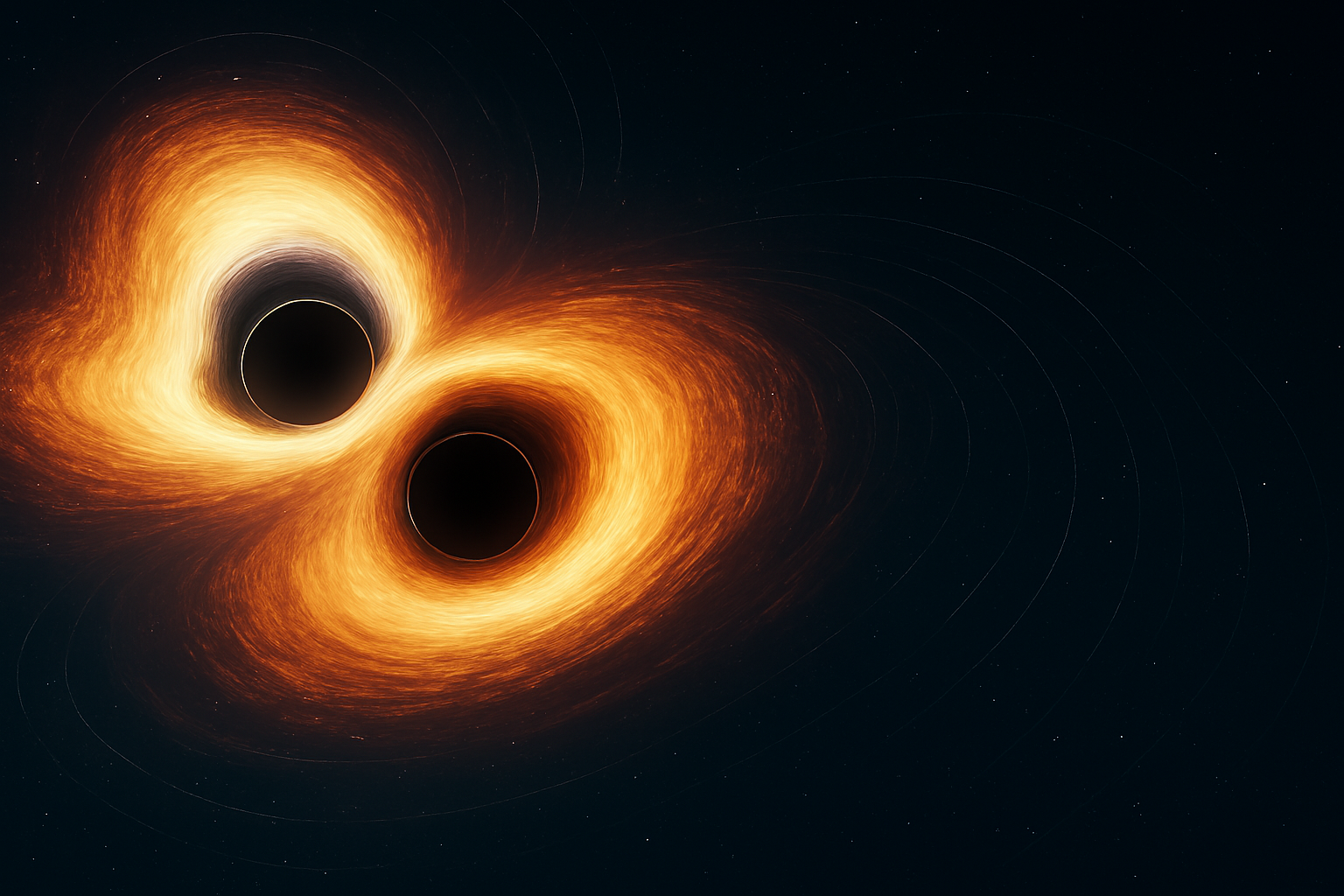Location
Mount Vernon, WA 98274
Location
Mount Vernon, WA 98274

In November 2023, scientists detected GW231123—a record-breaking black hole merger that defied expectations and reignited cosmic curiosity. But what if we imagined something even more extreme? This editorial explores a hypothetical collision between TON 618 and IC 1101, the universe’s largest known black holes. The result: gravitational waves that could reshape spacetime itself, and a “hypermassive singularity” that challenges the very definition of a black hole.
In November 2023, the scientific community was electrified by the detection of gravitational waves from a black hole merger of unprecedented scale. Designated GW231123, this event involved two colossal black holes — one with 137 solar masses and the other with 103 solar masses. Their union created a behemoth of approximately 225 solar masses; the largest black hole ever observed through gravitational waves.
This discovery challenges our understanding of stellar evolution and the so-called “upper mass gap,” where stars are expected to explode in pair-instability supernovae, leaving no remnant. Yet, here we are, observing black holes that defy these expectations. But what if we dared to imagine something even more extraordinary?
Picture this: the two largest known black holes in the universe — TON 618, with an estimated mass of 66 billion solar masses, and the central black hole of IC 1101, weighing in at around 40 billion solar masses. These titans, separated by millions of light-years, begin a slow, inevitable spiral toward each other, drawn together by the inexorable pull of gravity.
As they approach, the universe itself seems to hold its breath. The gravitational waves generated by their dance would dwarf anything humanity has ever detected. These ripples in spacetime would stretch and compress the very fabric of the cosmos, potentially affecting galaxies millions of light-years away.
The spin dynamics of such a merger would push the limits of Einstein’s general relativity. The rotational speeds could approach the theoretical maximum, creating a vortex of energy and matter that defies comprehension. And the resulting black hole? It might be so massive that it challenges our very definitions of what a black hole is. Could it become a new class of object, a “hypermassive singularity”? Or would it simply collapse further, hidden forever behind an event horizon of unimaginable scale?
This isn’t just science fiction. Events like GW231123 already challenge our models and force us to rethink the life cycles of stars and the formation of black holes. Could supermassive black holes like TON 618 and IC 1101 be the result of countless mergers over billions of years? If so, their spins and masses might encode a history of cosmic violence, a record of the universe’s most cataclysmic events.
Understanding these processes isn’t just an academic exercise. It has profound implications for our understanding of the universe’s past, present, and future. Gravitational wave astronomy is still in its infancy, but it’s already opening a new window into the cosmos, allowing us to observe phenomena that were once purely theoretical.
As we continue to explore these questions, the line between science and science fiction blurs. What if humanity could one day harness the energy of a black hole merger? Could we use gravitational waves as a form of communication, sending messages across the universe? And what happens when we finally observe an event so massive, so energetic, that it changes our understanding of physics itself?
The story of GW231123 is just the beginning. It’s a reminder that the universe is vast, mysterious, and full of wonders we have yet to discover. And as we look to the stars, we’re not just observing; we’re imagining, dreaming, and reaching for the impossible.